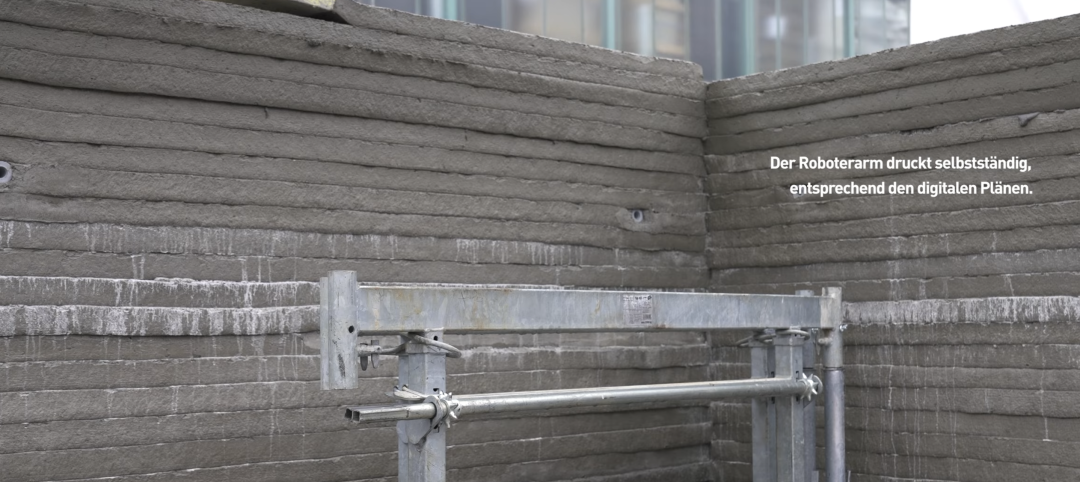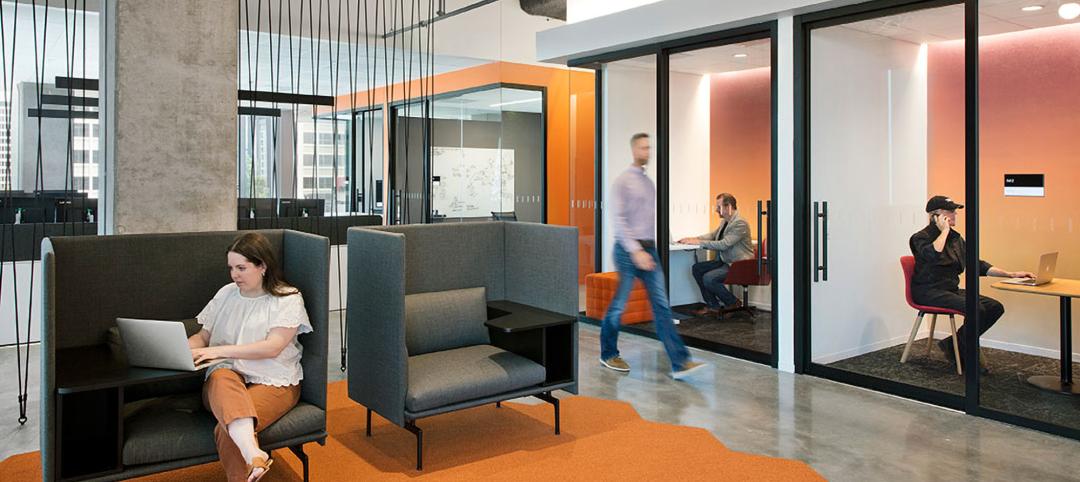A recent Urban Land Institute survey of 38 leading real estate economists and analysts from across the U.S. projects broad improvements for the nation’s economy, real estate capital markets, real estate fundamentals, and the housing industry through 2014.
The findings mark the start of a semi-annual survey of economists, the ULI Real Estate Consensus Forecast, being conducted by the ULI Center for Capital Markets and Real Estate. The survey results show reason for optimism throughout much of the real estate industry. Over the next three years:
- Commercial property transaction volume is expected to increase by nearly 50%
- Issuance of commercial mortgage-backed securities (CMBS) is expected to more than double
- Institutional real estate assets and real estate investment trusts (REITs) are expected to provide returns ranging from 8.5% to 11% annually
- Vacancy rates are expected to drop in a range of between 1.2 and 3.7 percentage points for office, retail, and industrial properties and remain stable at low levels for apartments; while hotel occupancy rates will likely rise
- Rents are expected to increase for all property types, with 2012 increases ranging from 0.8% for retail up to 5.0% for apartments
- Housing starts will nearly double by 2014, and home prices will begin to rise in 2013, with prices increasing by 3.5% in 2014
These strong projections are based on a promising outlook for the overall economy. The survey results show the real gross domestic product (GDP) is expected to rise steadily from 2.5% this year to 3% in 2013 to 3.2% by 2014; the nation’s unemployment rate is expected to fall to 8.0% in 2012, 7.5% in 2013, and 6.9% by 2014; and the number of jobs created is expected to rise from and expected 2 million in 2012 to 2.5 million in 2013 to 2.75 million in 2014.
The improving economy, however, will likely lead to higher inflation and interest rates, which will raise the cost of borrowing for consumers and investors. For 2012, 2013 and 2014, inflation as measured by the Consumer Price Index (CPI) is expected to be 2.4%, 2.8% and 3.0%, respectively; and ten-year treasury rates will rise along with inflation, with a rate of 2.4% projected for 2012, 3.1% for 2013, and 3.8% for 2014.
The survey, conducted during late February and early March, is a consensus view and reflects the median forecast for 26 economic indicators, including property transaction volumes and issuance of commercial mortgage-backed securities; property investment returns, vacancy rates and rents for several property sectors; and housing starts and home prices. Comparisons are made on a year-by-year basis from 2009, when the nation was in the throes of recession, through 2014.
While the ULI Real Estate Consensus Forecast suggests that economic growth will be steady rather than sporadic, it must be viewed within the context of numerous risk factors such as the continuing impact of Europe’s debt crisis; the impact of the upcoming presidential election in the U.S. and major elections overseas; and the complexities of tighter financial regulations in the U.S. and abroad, said ULI Chief Executive Officer Patrick L. Phillips. “While geopolitical and global economic events could change the forecast going forward, what we see in this survey is confidence that the U.S. real estate economy has weathered the brunt of the recent financial storm and is poised for significant improvement over the next three years. These results hold much promise for the real estate industry.”
The survey results suggest a marked increase in commercial real estate activity, with total transaction volume expected to rise from $250 billion in 2012 to $312 billion in 2014. CBMS issuance, a key source of financing for commercial real estate, is expected to jump from $40 billion in 2012 to $75 billion in 2014 (a considerable increase from the recession’s low point of $3 billion in 2009).
Total returns for equity REITs are expected to be 10% in 2012, 9% in 2013 and 8.5% in 2014, a sharp decrease from the surging REIT returns of 28% in both 2009 and 2010, but settling closer to the more sustainable level seen in 2011.Total returns for institutional-quality real estate assets, as measured by the National Council of Real Estate Investment Fiduciaries Property Index, have also been strong over the past two years and these returns are expected to remain healthy, providing returns of 11% in 2012, 9.5% in 2013, and 8.5% in 2014.
“Commercial real estate returns for institutional quality and REIT assets have performed very well in recent years, and this performance is expected to remain strong but trend lower over the next three years,” said Dean Schwanke, executive director of the ULI Center for Capital Markets and Real Estate.
A slight cooling trend in the apartment sector – the investors’ darling for the past two years – is seen in the survey results, with other property types projected to gain momentum over the next two years. By property type, total returns for institutional quality assets in 2012 are expected to be strongest for apartments, at 12.1%; followed by industrial, at 11.5%; office, at 10.8%; and retail, at 10%. By 2014, however, returns are expected to be strongest for office, at 10%, and industrial, at 10%; followed by apartments at 8.8% and retail at 8.5%.
- Apartments – The forecast predicts a modest increase in vacancy rates, from 5% this year to 5.1% in 2013 to 5.3% in 2014; and a decrease in rental growth rates, with rents expected to grow by 5% this year, and then moderate to a growth rate of 4.0% for 2013 and 3.8% by 2014. This may be indicative of supply catching up with demand.
- Office – The improved employment outlook is reflected in predictions for the office sector. Vacancy rates are expected to keep declining, reaching 15.4% in 2012, 14.4% in 2013, and 12.3% by the end of 2014. Office rental rates are expected to rise steadily, increasing 3.0% in 2012, 3.7% in 2013, and 4.3% in 2014.
- Retail – The strengthening economy is expected to boost the retail sector. Following years of rising vacancies, vacancy rates are expected to tighten to 13.0% by the end of 2012, 12.5% by 2013, and 12.0% by 2014. Retail rental rates are projected to rise by a slight 0.8% in 2012, and then increase more substantially in 2013 by 2%, and by 2.8% in 2014.
- Industrial/warehouse -- Vacancy rates are expected to continue declining to 12.8% by the end of 2012, 12.1% in 2013, and 11.5% by the end of 2014. Warehouse rental rates are expected to show growing strength, with an increase of 1.9% anticipated for 2012, 3.0% in 2013, and 3.6% in 2014.
For the housing industry, the survey results suggest that 2012 could mark the beginning of a turnaround – albeit a slow one. Single-family housing starts, which have been near record lows over the past three years, are projected to reach 500,000 in 2012, 660,000 in 2013, and 800,000 in 2014. The national average home price is expected to stop declining this year, and then rise by 2% in 2013 and by 3.5% in 2014. The overhang of foreclosed properties in markets hit hardest by the housing collapse will continue to affect the housing recovery in those markets. However, in general, improved job prospects and strengthening consumer confidence will likely bring buyers back to the housing market. BD+C
Related Stories
Laboratories | May 24, 2024
The Department of Energy breaks ground on the Princeton Plasma Innovation Center
In Princeton, N.J., the U.S. Department of Energy’s Princeton Plasma Physics Laboratory (PPPL) has broken ground on the Princeton Plasma Innovation Center (PPIC), a state-of-the-art office and laboratory building. Designed and constructed by SmithGroup, the $109.7 million facility will provide space for research supporting PPPL’s expanded mission into microelectronics, quantum sensors and devices, and sustainability sciences.
MFPRO+ News | May 24, 2024
Austin, Texas, outlaws windowless bedrooms
Austin, Texas will no longer allow developers to build windowless bedrooms. For at least two decades, the city had permitted developers to build thousands of windowless bedrooms.
Resiliency | May 24, 2024
As temperatures underground rise, so do risks to commercial buildings
Heat created by underground structures is increasing the risk of damage to buildings, recent studies have found. Basements, train tunnels, sewers, and other underground systems are making the ground around them warmer, which causes soil, sand, clay and silt to shift, settle, contract, and expand.
Sports and Recreational Facilities | May 23, 2024
The Cincinnati Open will undergo a campus-wide renovation ahead of the expanded 2025 tournament
One of the longest-running tennis tournaments in the country, the Cincinnati Open will add a 2,000-seat stadium, new courts and player center, and more greenspace to create a park-like atmosphere.
Mass Timber | May 22, 2024
3 mass timber architecture innovations
As mass timber construction evolves from the first decade of projects, we're finding an increasing variety of mass timber solutions. Here are three primary examples.
MFPRO+ News | May 21, 2024
Massachusetts governor launches advocacy group to push for more housing
Massachusetts’ Gov. Maura Healey and Lt. Gov. Kim Driscoll have taken the unusual step of setting up a nonprofit to advocate for pro-housing efforts at the local level. One Commonwealth Inc., will work to provide political and financial support for local housing initiatives, a key pillar of the governor’s agenda.
Building Tech | May 21, 2024
In a world first, load-bearing concrete walls built with a 3D printer
A Germany-based construction engineering company says it has constructed the world’s first load-bearing concrete walls built with a 3D printer. Züblin built a new warehouse from a single 3D print for Strabag Baumaschinentechnik International in Stuttgart, Germany using a Putzmeister 3D printer.
MFPRO+ News | May 21, 2024
Baker Barrios Architects announces new leadership roles for multifamily, healthcare design
Baker Barrios Architects announced two new additions to its leadership: Chris Powers, RA, AIA, NCARB, EDAC, as Associate Principal and Director (Healthcare); and Mark Kluemper, AIA, NCARB, as Associate Principal and Technical Director (Multifamily).
MFPRO+ News | May 20, 2024
Florida condo market roiled by structural safety standards law
A Florida law enacted after the Surfside condo tower collapse is causing turmoil in the condominium market. The law, which requires buildings to meet certain structural safety standards, is forcing condo associations to assess hefty fees to make repairs on older properties. In some cases, the cost per unit runs into six figures.
Office Buildings | May 20, 2024
10 spaces that are no longer optional to create a great workplace
Amenities are no longer optional. The new role of the office is not only a place to get work done, but to provide a mix of work experiences for employees.

















